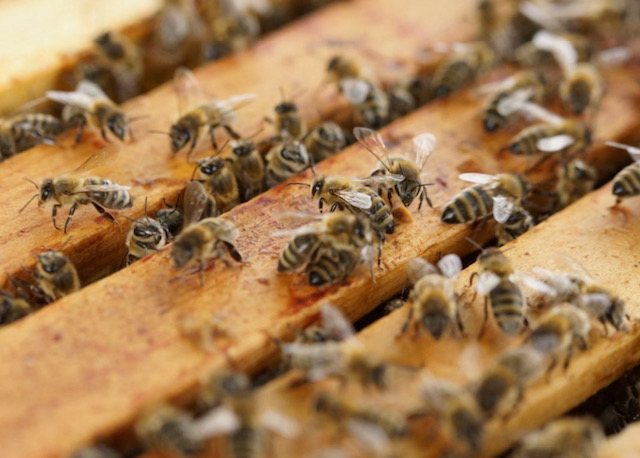Get your honey bee hive ready for winter
According to the Australian Beekeeping Guide, honey bees don’t actually hibernate in winter. Instead, they form a winter cluster by huddling together to conserve heat. Colonies are often broodless during winter. In warmer locations, a small amount of brood rearing may continue.
Still, you need to make sure your bees have the odds stacked in their favour so they come out strong after winter.
Complete Your Pre-Winter Inspection
The final inspection before winter should take place in April or the beginning of May at the latest.
- Pick a sunny day on the warmer side with minimal wind
- Remove the lid and any supers to inspect the brood box
- Check the frames and estimate the amount of honey stored
- Thoroughly inspect the brood for disease symptoms
- Check the status of the colony and queen, watch out for the followiing :
- Is it a weak colony?
- Is there a drone layer?
- Is the queen failing?

Harvest any surplus honey before over-wintering
If there is any honey surplus available, now is the last chance to collect it! But be sure to leave sufficient stores for your bees to survive the winter.
Beginners should seek guidance for their area from their local beekeeping group or mentor, but as a general guide a colony needs at least 18kg of honey to survive winter, with the average full depth Langstroth frame weighing 2.2kg.
Feed your bees now if they need to build up winter stores
If your bees do not have sufficient winter stores in the first place, now is a good time to feed with sugar syrup. They will process it and store it in honeycomb for the winter.
Feed your bees sugar syrup as long as the bees are active. According to Aussie Apiarists Online, once day temperatures stay below 13°C it gets too cold for the bees to be active, they won’t be able to process the sugar syrup.
Closing Down the Hive for Winter
Adapted from the Australian Beekeeping Guide
- Compact your bees into one or two boxes with sufficient winter stores. You won’t be opening the hive for inspection of frames during cold weather.
- The basic guide is to only give the bees enough room to accommodate them. The tighter they cluster the better, and you will be surprised how many bees can fit in a box.
- Consider removing any Queen Excluders so bees can move freely – the cluster will always locate itself in the warmest area.
- Consider adding a hive mat to help conserve warmth. Hive mats may be made from any durable material that the bees can’t shred, e.g. floor vinyl or plywood. Cut them about 16 mm smaller than the box each side so the bees can circulate air freely.
- Adjust entrance reducers to keep mice out of the hive in winter months
- Position the hive so it is not overly exposed to the elements. Keep it out of shady, damp, low lying spots and make sure the hive will get plenty of winter sun. Face the hive east or north-East.
Thanks to B2B.com.au for this information.
